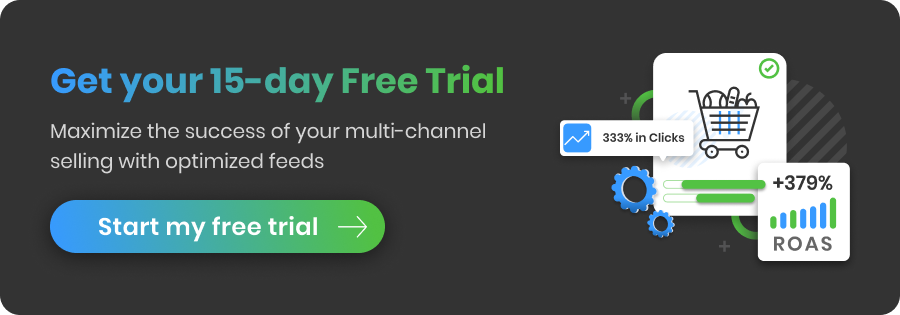The quality of your data feed is the foundation for any successful PPC-campaign.
What is a Data Feed?
A data feed is a way of sending structured, current, and up-to-date information. It serves to deliver the newest data promptly to websites, apps, or other online tools, ensuring users receive the latest content and updates efficiently.
Two common types of data feeds are news feeds, and product data feeds.
Web feed
Web feed is a data feed type designed to support real-time web functionalities. Rich Site Summary (RSS) feeds are a typical example of this. These feeds enable platforms like blogs and social media sites like Facebook to automatically distribute current news snippets or alerts to individuals who have subscribed to the feed.
Product feed
A product feed is commonly utilized by eCommerce platforms and other websites to showcase product details. The primary objective of a data feed on shopping sites is to assist customers in locating desired products for purchase. Ensuring that the data feed is precise and meets the platform's requirements is crucial.
A product data feed makes it quick and easy to load information about thousands of products to a website.
Examples of shopping platforms that use product feeds are eCommerce channels like Google Shopping or Amazon, social media like Facebook, or price comparison engines like Pricegrabber.
Structured Data in a Data Feed
One of the crucial aspects of a data feed is the structured nature of the information. This can look confusing, but the structured fields make it easy for algorithms and programs to understand and use the data.
Each item in a data feed (a product or record) will have many pre-set attributes. These both define the product and make it unique from other items in the feed. Attributes can have standard values, such as being in stock or not in stock. They can also have open values, such as the title or description of a product.
A typical data feed used in eCommerce contains the following attributes:
- ID
- Title
- Description
- Price
- Stock status
- Color
- Image URL
- And more
Distribution of Data Feeds
Normally, you distribute data feeds to channels by FTP. The platforms and channels that can accept data feeds include:
- Shopping and price comparison websites
- Marketplaces, like eBay and Amazon
- Affiliate networks
- Some social networks like Facebook, Pinterest, or Instagram
- News sites
How to Create a Data Feed?
You can create your data feed in three ways: manually, generating from your online store system, or using a feed management tool.
Manual creation involves creating a feed file from scratch, while online shop systems typically offer automated feed generation with some customization required. A good alternative is to invest in a feed management tool that allows you to create product feeds efficiently and then integrate them seamlessly with your chosen channels.
Data Feed Specifications
Although there are common standards, each channel can also have its own feed specifications. This helps the channel ensure that they identify the products correctly. They also guarantee that they deliver the best possible user experience.
A shopping site's feed specification is created so that all products of the same type are connected. This way, it can present a useful comparison to its users.
Feed specifications also allow users to get accurate information. This helps the channel to only show products that are in stock rather than something that the retailer offers but doesn't have in stock.
In addition to varying feed specifications, there are several feed formats that channels accept. These include:
- CSV
- plain text (txt)
- XML
- JSON
Plain text files are the easiest to produce as they require no technical skills. However, not all feed recipients accept plain text feeds. A good example of a channel that does is Google Shopping.
Data Feed Management
Data feed management involves the careful structuring and distribution of your digital product data. It includes tasks such as enhancing product feeds to improve the performance of shopping campaigns on different platforms, maintaining accurate data sync with each channel and ensuring real-time inventory updates.
Services like DataFeedWatch make it easy to manage feeds for many channels. They help you meet requirements and make it possible to optimize your data feed.
Why Are Data Feeds Important?
The main purpose of a data feed is to help consumers find products they want to buy. It is important to have an accurate data feed that adheres to the channel's specifications.
If you don't, shopping websites and search engines may not be able to link your product to a user's search.
Data Feed Tips
- Update regularly
The frequency of feed updates depends on how often the information in the feed changes.
The chosen frequency is set to ensure the feed is as fresh and accurate as possible. This could be once a week, once or many times a day.
- Include all attributes for every product, including those that are not compulsory
- Write unique, helpful, descriptive, and keyword-rich content in appropriate fields (such as description fields)
- Adhere to all data feed specifications and read guidelines carefully
A well-managed data feed will result in more people seeing your products. This gives you the opportunity to increase sales and generate more traffic to your website.
